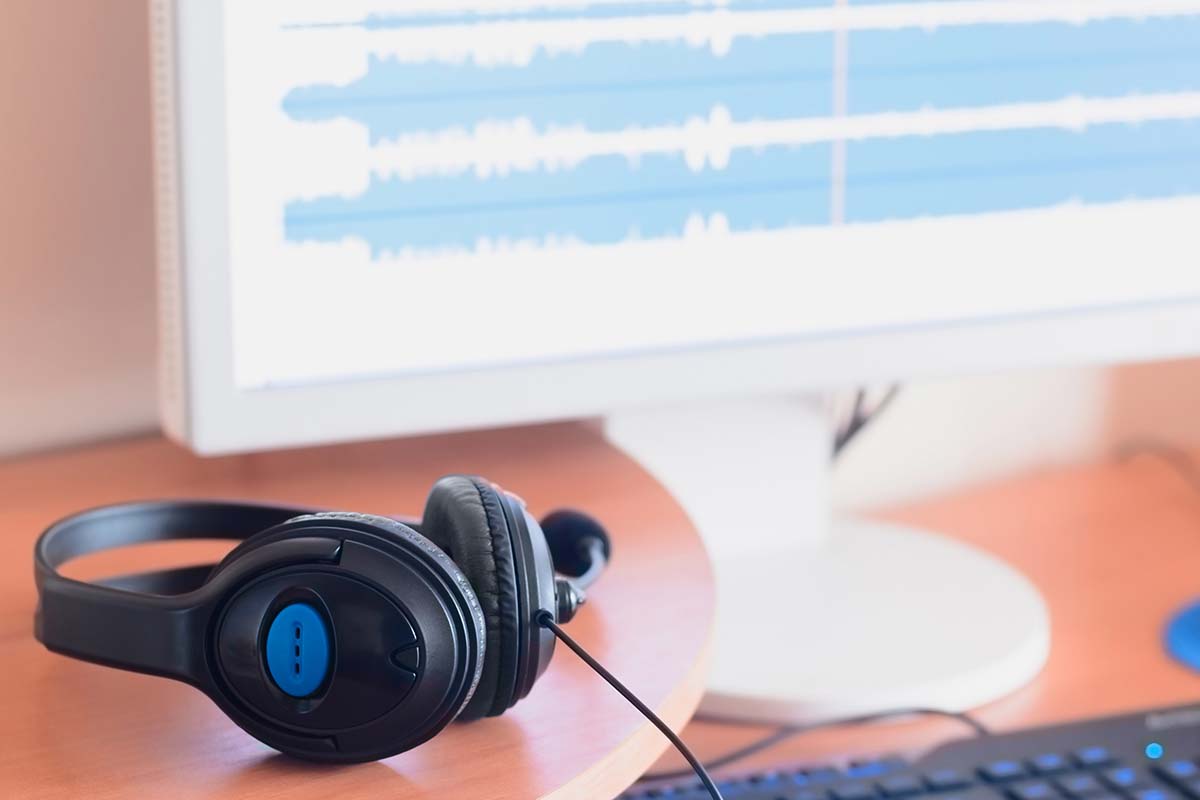How to Start Your Own Internet Radio Station: Beginner Equipment Guide
✨Key Points
Start with Essentials: A reliable computer, strong internet connection, quality microphone, and good headphones are the foundation of how to build your radio station as a beginner.
Upgrade Smartly: As your audience grows, enhance sound and control with tools like audio interfaces, mixers, and acoustic treatments.
Budget Wisely: Begin with affordable, durable gear and expand gradually—quality setup and smooth workflow matter more than expensive equipment.
Launching your first internet radio station—and learning how to build your radio station—can be a thrilling venture, offering a creative outlet and the opportunity to connect with a unique community of listeners from around the world.
From curating playlists to hosting live talk shows or interviews, internet radio empowers you to express your individuality while reaching a potentially global audience.
However, the backbone of any successful station is the dependable equipment that ensures your broadcasts reach and captivate your listeners.
Therefore, selecting the right broadcasting equipment is one of the most crucial decisions you’ll face in the early stages of your journey.
Beyond simply transmitting your voice or music, quality equipment helps create a polished, professional sound that encourages repeat listenership and helps prevent frustrating technical disruptions, giving you more freedom to focus on engaging, creative content.
Whether you’re beginning with a modest, DIY setup in your bedroom or have set your sights on eventually upgrading to a fully equipped studio, clearly understanding the equipment needed can help create a smoother launch and reduce the risk of avoidable headaches.
By familiarizing yourself with foundational and advanced gear options, you’ll be better equipped to make wise spending decisions, enjoy a smoother workflow, and allow your station to grow along with your ambitions.
This guide is tailored to walk you through how to build your radio station — covering the essential items for launching your first broadcasts and highlighting optional upgrades that can enhance your setup as your needs and audience expand.
Essential Equipment for Your Internet Radio Station
Securing reliable foundational gear is the first and most vital step toward ensuring your station produces crisp, professional-quality sound with minimal interruptions.
Every aspiring broadcaster should begin by investing in these essentials, which form the technological backbone of any successful internet radio setup.
Reliable Computer
Your computer serves as the nerve center for your radio station and, therefore, must be both dependable and adequately powerful.
It will need enough processing power to run audio software smoothly, handle live streaming, and process digital effects.
Still, it must also multitask efficiently if you manage playlists, schedules, or live calls.
Opt for a machine with an Intel Core i3 (or equivalent) processor, at least 8GB of RAM, and a solid-state drive (SSD) if possible, which offers faster boot times and file transfers.
Even budget-friendly laptops or refurbished desktops can suffice—what matters most is reliability and performance headroom, so your broadcasts don’t stutter, glitch, or crash during live airtime.
Regularly update your operating system and audio software to reduce compatibility issues or cybersecurity risks.
Stable Internet Connection
A rock-solid internet connection is non-negotiable for high-quality streaming, as any dropouts or speed fluctuations can severely disrupt your broadcast and frustrate listeners.
When evaluating your internet service, look for upload speeds of at least 5 Mbps; this gives a comfortable buffer, especially when streaming at higher bitrates for richer sound.
While Wi-Fi may seem convenient, a wired Ethernet connection is vastly superior: it provides dependable speed, lower latency, and is much less prone to sudden disconnects or interference.
If your home studio location limits your options, consider using powerline adapters as a backup, which route Ethernet signals through your home’s electrical wiring for more stable connectivity.
Quality Microphone
Your microphone is arguably essential in shaping your station’s sound.
For beginners learning how to build your radio station, USB microphones like the Audio-Technica ATR2100x or Blue Yeti offer a blend of affordability, ease of use, and solid sound clarity—plug and play without extra equipment.
Investing in an XLR microphone such as the Shure SM7B or Rode Procaster as your station or budget grows is a natural next step. XLR mics require an audio interface to connect to your computer.
However, they provide enhanced audio fidelity and richer vocal presence and typically offer better background noise rejection, making them a favorite among broadcasters and podcasters.
Headphones
Professional closed-back headphones like the Audio-Technica ATH-M50x or Sony MDR-7506 are indispensable for real-time monitoring of your station’s audio.
Unlike consumer headphones, these models are engineered for accurate sound reproduction and help detect issues like peaking, muddiness, or distracting background noises before they go live.
They’re also comfortable, so you can wear them for extended sessions without fatigue, ensuring you’re always fully in control of the broadcast’s sound quality.
If you plan to host shows for several hours or participate in live interviews, comfort and durability become even more critical.
Optional Equipment to Enhance Your Broadcasts
Once your station’s core setup is established, upgrading with additional gear can give you greater flexibility and polish.
Below are the most popular add-ons to consider when learning how to build your radio station and expand your setup as you grow:
Audio Interface or Mixer
An audio interface, such as the Focusrite Scarlett 2i2 or PreSonus AudioBox, vastly improves the overall audio quality by providing dedicated analog-to-digital conversion for XLR microphones or instruments.
This is a must-have for anyone looking to upgrade from USB mics, incorporate live instruments, or include multiple co-hosts with professional-grade audio.
If you plan guest interviews, DJ sets, or require mixing various audio sources, a physical mixer like the Behringer Xenyx Q802USB offers hands-on level control, onboard effects, and easy routing for complex setups.
Wikipedia’s article on audio interfaces can help you make an informed decision here.
Pop Filter and Microphone Stand
Adding a pop filter to your studio is a simple, cost-effective way to improve vocal clarity.
It reduces “pops” from certain consonants and softens sibilance, making your voice more pleasant to listeners.
A reliable microphone stand or boom arm enhances your comfort.
It ensures consistent mic placement, prevents accidental bumps, and reduces handling noise.
It is beneficial during long broadcasts or when you need to adjust your recording space quickly.
Soundproofing Materials
Improving the acoustics of your studio doesn’t have to be expensive.
Acoustic foam panels, bass traps, and reflection shields help absorb echoes and unwanted background sounds, resulting in a more intimate, focused sound.
For those on a budget, even hanging heavy blankets, rugs, or curtains around your workspace can help deaden sound reflections and improve the overall listening experience.
Simple measures like sealing windows, closing doors, or using draft blockers can further minimize interruptions from outside noise.
Budget Considerations
Outfitting your internet radio station is as much about strategic planning as technical expertise.
Starting lean is a perfectly acceptable way to find your footing, develop your on-air style, and gradually build your equipment roster as your audience and confidence grow.
Here’s a general breakdown of expected costs to inform your purchasing approach:
- Reliable Computer: $500 – $1,000 (refurbished options may lower costs;)
- USB/XLR Microphone: $100 – $200, depending on type and features;
- Closed-back Headphones: $100 – $150 for studio-grade monitoring;
- Audio Interface: $150 – $200 (if upgrading to XLR mic;)
- Pop Filter and Stand: $50 – $100 for improved comfort and vocal clarity.
Many stations start with a laptop, a decent USB mic, and headphones, only introducing advanced tools after gaining more experience and listeners.
Scouring local classifieds, reputable online marketplaces, or buying used gear from certified sellers is another excellent way to stay under budget without sacrificing quality.
Remember, the aim is to establish a stable, engaging show—equipment upgrades can always follow, fueled by listener donations or station revenue as you grow.
Final Thoughts
Choosing the right equipment is foundational to establishing your internet radio station’s identity and ensuring reliable broadcasts.
By spending on quality gear that matches your needs and budget, you create a more professional station, enable smoother shows, and ensure that technical problems don’t distract from your content.
Keeping your station’s workflow simple initially lets you focus on refining your skills and connecting with listeners.
As your ambitions and audience build, strategically adding enhancements to your setup will offer new creative possibilities and solidify your radio brand.
For more detailed equipment comparisons and recommendations, Live365’s equipment guide also provides practical advice relevant to internet radio creators.
Start with the essentials, build good habits, and enjoy bringing your voice to the world—one broadcast at a time.






















